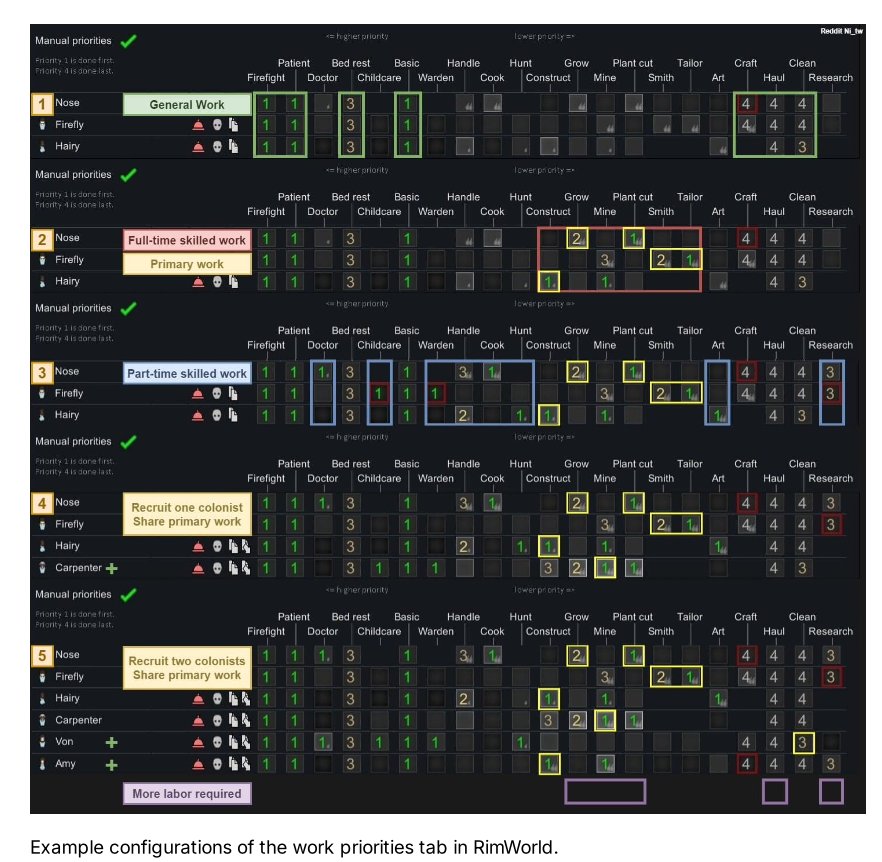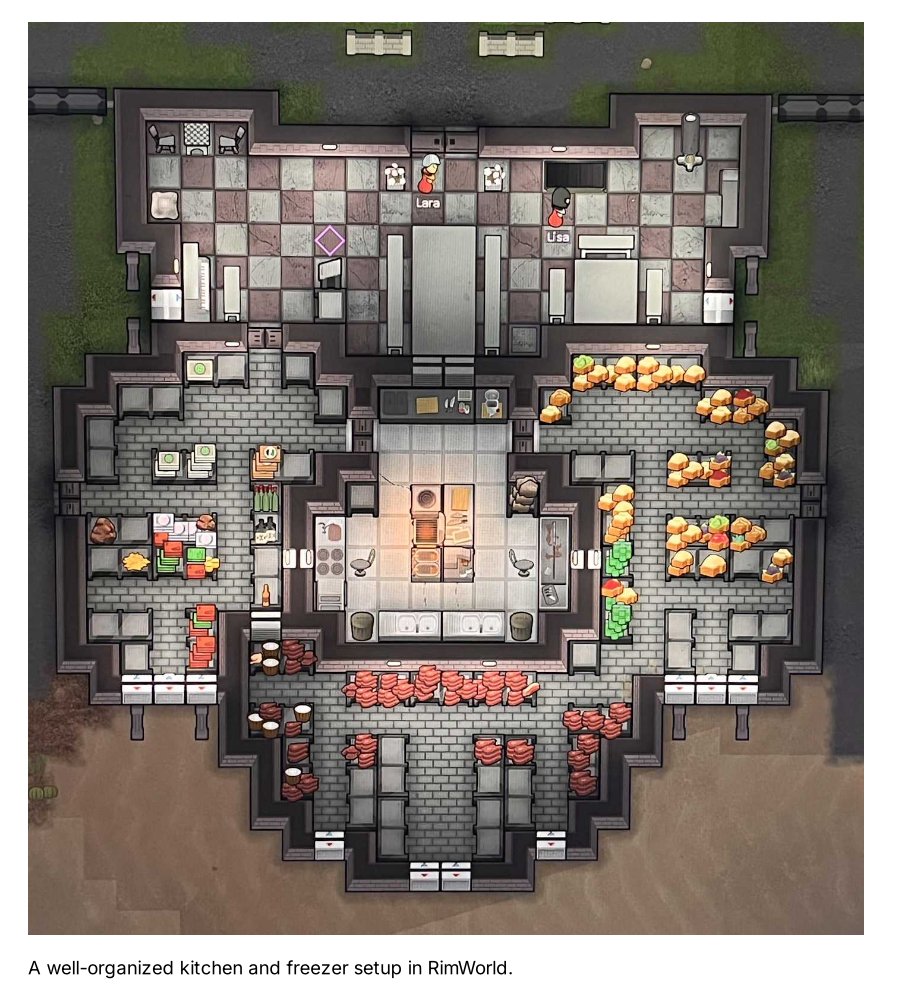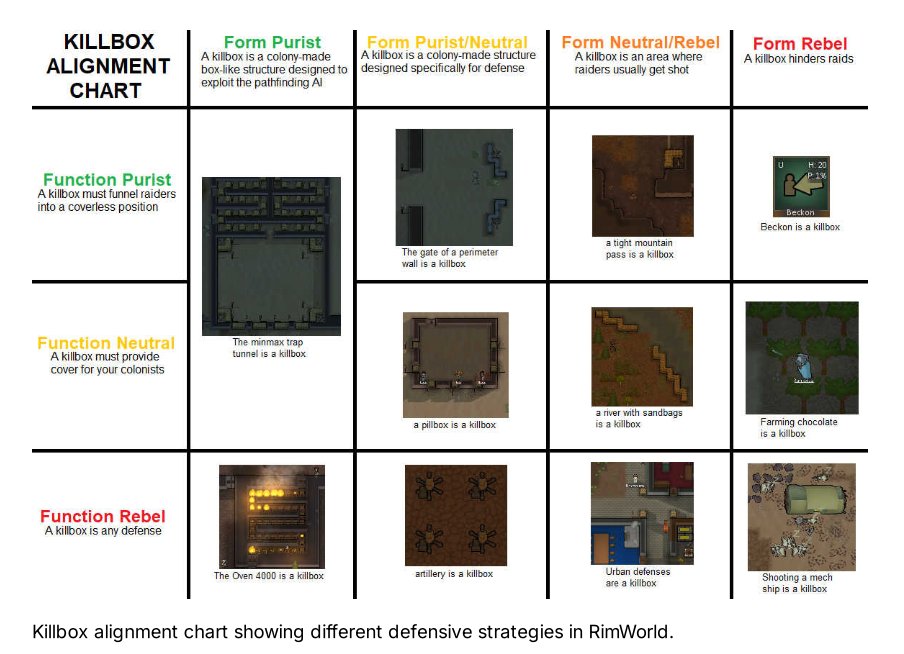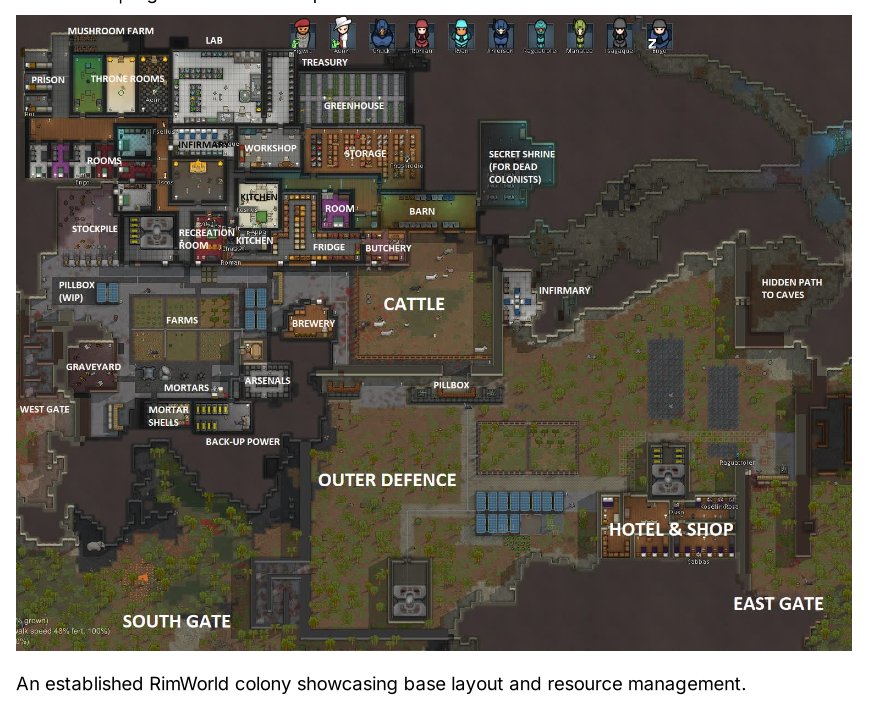Your First RimWorld Colony Won't Crash and Burn With These Essential Survival Tactics
Quick Navigation
Welcome to the Rim, where a little knowledge and planning can mean the difference between a thriving colony and one that's... well, dinner for the local wildlife. This guide distills hard-earned lessons from veteran players and the latest community tips into an easy-to-follow roadmap for beginners. We'll cover how to survive the critical early days, how to build a functional base, and ways to manage your colonists so they don't lose their minds (literally). Whether you're on PC, console, or a Steam Deck, and whether you play vanilla or lightly modded, these essentials will set you up for success. Ready for more advanced strategies? Check out our detailed base building guide and advanced defense strategies.
Quick-Start Guide: First 15 Minutes to Survival
When your three crash-landed colonists hit the ground running, you need to make smart moves in Day 0 and Day 1. Here's a step-by-step quick-start to ensure your colony's immediate survival.
- Pause and Assess – As soon as the map loads, hit pause. Unforbid your starting items (they have little red X's by default) so your colonists can use them. Scan the area for dangers (like predator animals) and nearby resources. Identify a good spot for your base: ideally near ruins or a hill (for easy shelter), with rich soil patches nearby for farming.
- Equip Weapons – Draft each colonist and right-click a weapon to equip it. You likely have one rifle, one pistol, one knife. Give firearms to the colonists with higher Shooting skill and knife to the best Melee. Being armed from the start ensures you're ready if a hostile animal (or raider) wanders in early.
- Build a Shelter – Use the Architect → Structure menu to build a wooden shack (about 9x9 tiles or so). Wood is usually plentiful in temperate biomes and much faster to build with than steel (save steel for later). Enclose at least one room and include a door. This will give you a roof over your supplies and beds.
- Stockpile and Roof It – Designate a Stockpile Zone inside your new shelter. Your colonists will start hauling all those crash-landed supplies here. Also consider a Dumping Stockpile just outside for rock chunks and corpses. Once walls are up, build a roof (should happen automatically if enclosed).
- Place Beds – Under Architect → Furniture, place beds (or sleeping spots at minimum) for each colonist inside the shelter. They'll get a mood debuff sleeping on the ground outside, so even a shared barracks is fine for now.
- Get Food Production Started – Locate fertile soil (dark green patches). Use Architect → Zone to create a Growing Zone (around 6x6 or larger). Plant rice in one plot (it grows fast). In another plot, plant potatoes or corn. Mark some wild berry bushes to Harvest for an immediate food boost.
- Establish a Cooking Spot – Build a campfire or a steel fueled stove inside your shelter once you have some raw food. Set a bill to "Cook Simple Meal (Do until you have X=10)" so they maintain a supply.
-
Set Work Priorities – Open the Work tab at the bottom and enable Manual Priorities (checkbox at top). Ensure every colonist has the basics turned on: Firefighting, Patient, Bed Rest, Basic, and also Haul and Clean. Those should be priority "1" for everyone. Next, assign specialties based on their skills and passions.

Example configurations of the work priorities tab in RimWorld
- Add Basic Comforts – Build a table and a couple of chairs inside your shelter. "Ate without table" is an easy -3 mood debuff to avoid. Also place a Horseshoes Pin outside the door for recreation.
- Plan a Freezer – Plan a food storage room attached to your shelter. A 6x6 room is fine. Leave space to later install 2 coolers in one wall for when you research electricity.
- Minimal Defenses – Use Sandbags or Barricades to create cover spots outside your shelter. Arrange them so raiders approaching will have to come from a direction where your colonists have cover advantage.
- Schedule & Manage Needs – Check the Schedule tab. By default, it's pretty lenient. You can leave it or give them 1-2 hours of Recreation time to ensure they don't work themselves to break risk.
Success! By the end of the first in-game day, you should have a roof over your colonists' heads, beds to sleep in, a meal or two prepared, and some food growing for the future. You've survived the most critical day!
Struggling to Survive the First Days (Core Survival)
In RimWorld, survival is your first priority. New players often find their colony in dire straits within the first week – food has run out, everyone's miserable, and mental breaks are happening. Let's prevent that.
Early Food and Farming Basics
Food is life. New colonies often starve because players underestimate how quickly the initial rations dwindle. Here's how to not go hungry:
- Rationing Package Survival Meals – You start with a few packaged survival meals. They never spoil, but don't let colonists binge them early.
- Berry Picking and Hunting – Harvest wild berry bushes and hunt easy animals like hares or turkeys. Avoid aggressive animals early on.
- Quick Cooking = Fewer Problems – Cooked meals reduce food poisoning chances. If your cook has skill ≥4, make simple meals.
- Farming Strategy – Rice matures in ~3 days. Potatoes handle poor soil well. Corn yields huge quantities but takes 11+ days.
- Hunting for Protein – Focus on harmless targets like alpacas or deer. Draft a backup colonist in case animals revenge.
- Avoiding Food Poisoning – Keep the cooking area clean. A dirty kitchen leads to food poisoning which incapacitates colonists.
- Temperature and Food – In hot biomes, build a passive cooler ASAP. In cold biomes, use the environment as a natural freezer.
Remember the community mantra: "Keep pawns fed, keep pawns happy, keep pawns protected" – food comes first in that holy trinity!
Shelter, Warmth & Base Setup
Shelter isn't just about a roof; it's about temperature, safety, and organization. Here's how to manage your early shelter:

A well-organized kitchen and freezer setup in RimWorld
- Barracks vs Bedrooms – A shared barracks is more efficient early on. You'll expand into bedrooms later.
- Lowering Foot Traffic – Design your base so colonists don't have to walk long distances for common tasks.
- Combined Spaces – It's okay to have dining and recreation in one area. This can become the heart of your base.
- Using Existing Structures – Consider using ancient ruins as part of your starter base (but beware of "Ancient Danger" rooms).
- Climate Control – In cold biomes, build campfires indoors. In hot biomes, build passive coolers. Aim for indoor temps between 16°C–26°C.
- Lighting – Place torch lamps inside to avoid the darkness mood debuff and work speed penalty.
- Expandable Design – Plan your initial building with future expansion in mind. The comb-shaped base is one good pattern.
Early Hazards: Disease, Wounds, and Fires
Even with food and shelter sorted, RimWorld can throw curveballs. Here's how to handle common threats:
- Disease (Flu, Malaria, etc.) – Assign sick colonists to a medical bed. Monitor the Immunity % vs. Disease %. Good tending and rest help win this race.
- Injuries and Healing – After a fight, rescue downed colonists and tend their wounds. Keep medical beds in clean rooms to reduce infection chances.
- Fire! – Draft everyone to extinguish fires or use the Home zone. Keep firebreaks (gaps) around wooden buildings. Enable Firefighting priority 1 for everyone.
- Mental Breaks – Watch the mood bar. If someone is persistently low (red or orange), address it before they break. Check their Needs tab to identify issues.
It's okay to lose a colonist early or even lose the whole colony. RimWorld has a motto: "Losing is fun." Each disaster teaches you something for your next attempt.
Building a Base from Scratch (Base Building Basics)
Once you've got survival basics down, the next challenge is turning your ragtag shelter into a functional base. This section addresses inefficient layouts, building too much too fast, and vulnerability to attack.
General Base Design Principles
When planning your base, imagine the daily routine of your colonists and try to minimize walking and waiting time. Some general rules and tips:
- Centralize Common Areas – Kitchen, dining, and rec areas benefit from being central. Colonists will waste less time walking between activities.
- Think in Zones – Organize your base into functional zones: cooking/food, production, living quarters, medical, and defense.
- Conjoined Workshops – Place workstations that share resources in the same room to benefit from shared Tool Cabinets and climate control.
- Storage Solutions – Use distributed stockpiles near where items are needed instead of one central stockpile. Shelves organize items and speed up access.
- Plan for Power – Consider where generators and power lines will go. Hide conduits in walls when possible. Choose power sources appropriate for your biome.
- Don't Overbuild Early – Build only what you need, when you need it. Excess wealth attracts stronger raids.
- Use of Terrain & Shape – Consider natural features like mountains for protection and insulation. Adapt your design to the landscape.
- Beautification – A pretty base affects mood. Quick ways to boost beauty: smooth stone floors, wood floors, plant pots with flowers.
Classic Early Base Layout Example
A central 11x11 workshop/living room containing:
- 3-5 beds in one corner (barracks style)
- A table and chairs in another corner
- A couple of workbenches along the walls
- Shelves with frequently used items
- A lamp or two
Adjacent to this room, a 6x6 kitchen with a door connecting, and an attached freezer of similar size.
Nearby, a small hospital room with 2-3 medical beds.
A perimeter of walls or natural rock encircling these, with one or two planned choke points for defense.
The golden rules: Build Compactly, Keep spaces Clean, Connect rooms smartly, and build Purposefully. For more advanced base layouts and optimization strategies, see our comprehensive base building guide.
Useful Structures & When to Build Them
Some buildings are worth prioritizing, while others can wait. Here's a guide to what to build when:
Early Priority (Days 1-5)
- Research Bench - Build by day 2-3
- Basic Walls & Doors - For initial shelter
- Horseshoes Pin - Cheap recreation
- Campfire/Stove - For cooking
- Growing Zones - For food production
- Basic Traps - For initial defense
Mid Priority (Week 1-2)
- Freezer - Once you have power
- Power Generation - Wood generator or wind
- Chess Table - Additional recreation type
- More Defensive Structures - Expand traps, sandbags
- Butcher Table - For processing meat
- Stonecutting Table - For stone blocks
Later Priority (Week 3+)
- Turrets - After researching Microelectronics
- Comms Console - For trading and quests
- Private Bedrooms - For better mood
- Advanced Recreation - TV, billiards table
- Hospital - With vitals monitors
- Workshop Expansions - Specialized stations
Facing Raids and Threats (Defense Basics)
For a new player, combat can be panic-inducing: colonists running everywhere, bullets flying, things catching fire. This section will equip you with fundamental defense strategies to stay safe in the RimWorld.
Basic Defensive Tactics
Early raids are scaled to your wealth and combat power. Here's how to handle them effectively:
- Spot them early – When you get a "Raid!" message, pause and assess: how many attackers, what weapons, which direction?
- Use Terrain and Cover – Position your shooters behind cover (sandbags, walls, natural rocks) facing the direction enemies will come.
- Focus Fire – Have your colonists concentrate on one target at a time, starting with the most dangerous enemy.
- Kiting – With a fast colonist and a ranged weapon, you can shoot, run, shoot, run to defeat slow melee enemies without taking damage.
- Melee Blocking – Use a colonist with good melee skills to engage enemies while others shoot. Be careful with friendly fire.
- Retreat and Regroup – If things go badly, fall back deeper into your base where you have more cover or ambush positions.
Base Defenses You Can Build Early
- Traps – Place wooden spike traps in likely enemy paths. A wooden trap does 40 damage – enough to kill many early enemies.
- Choke Points – Create narrow passages where enemies must pass through, allowing your shooters to focus fire.
- Defensive Landscaping – Clear trees and crops in fields of fire so enemies have less cover while approaching.
- Cover Positions – Place sandbags or barricades at strategic positions to give your colonists defensive advantages.
Remember: Always think, "Where are my bullets going?" Arrange your firing line so colonists don't hit each other. Better to lose some loot or let a building burn than lose your best shooter in a futile stand. For advanced combat tactics and weapon selection, check our detailed defense guide.
Advanced Defense: Killboxes and Beyond
Once you've mastered the basics, consider these more advanced defense strategies:
Killbox Design
A proper killbox usually involves a narrow entrance leading into an open area where your colonists have clear shots at enemies who have little cover. Often includes:
- A zigzag path with deadfall traps
- An open firing zone at the end
- Sandbag positions for your shooters
- Concrete or sterile floor to prevent fires

Killbox alignment chart showing different defensive strategies in RimWorld
Countering Special Raids
- Sappers - Will dig through walls; need mobile defense
- Sieges - Attack them before they set up mortars
- Drop Pods - Keep interior defense options
- Mechanoids - Need armor-piercing weapons or traps
Multiple Defense Lines
Don't rely on just one defensive strategy:
- Outer perimeter with traps and killbox
- Secondary defensive positions if outer is breached
- Interior safe room for last stands
- Escape routes for evacuation if needed
Pro tip: Consider playing on a slightly easier difficulty while learning defense tactics. As you improve, you can increase the challenge.
Keeping Colonists Happy and Productive (Colony Management)
Your survival and base mean nothing if your colonists are miserable wrecks who spend all day binging on psychite tea or hiding in their rooms. This section focuses on managing your colonists' well-being and work efficiency.
Work Priority & Scheduling Tips
Mastering the Work tab is akin to mastering RimWorld's core automation. Here are key tips:
- Understand Job Types – Each work category may bundle multiple skills. "Construction" covers both building and repairing. "Doctor" includes tending and surgeries.
- Use Priority Numbers Wisely – Set life-and-death tasks to 1 (Firefight, Patient, Doctor). Primary roles at 2, secondary at 3, and others at 4.
- Limit Task Overlap – Sometimes you want only one person doing a job. For example, one primary cook at the stove to avoid inefficiency.
- Night Shift / Day Shift – Set Night Owl colonists to sleep during the day (11am-6pm) and work at night. This gives them a mood boost and provides 24-hour productivity.
- Joy and Work Balance – Schedule 1-2 hours of Recreation time to ensure colonists' needs are met. This prevents "Recreation Deprived" debuffs.
- Prevent Idleness – Ensure everyone has at least hauling and cleaning enabled at some priority so they're never idle when there's work to be done.
- Leveraging Talents & Passions – Assign colonists with passion for a skill (flame icons) to related tasks when possible. They learn faster and get a mood boost.
Remember that colonist priorities can and should change as your colony develops. Regularly review the Work tab as conditions change.
Mood Management & Recreation
Unhappy colonists work slower, break more, and could even leave or fight each other. Here's how to keep them content:
Key Mood Buffs to Aim For
- Comfort - Provide chairs and good beds
- Spacious interior - Make rooms bigger than minimum
- Impressive rooms - Beautify dining and rec rooms
- Social gatherings - Parties boost mood for days
- Varied recreation - Multiple recreation types
- Fine meals - +5 mood vs simple meals
Mood Penalties to Avoid
- Hungry / Tired - Basic needs neglected
- Ugly environment - Dirty or bloody rooms
- Witnessed death - Seeing people die
- Disturbed sleep - Others walking by beds
- Ate without table - Place tables near food
- Tattered apparel - Clothing under 50% durability
- Recreation starved - No fun activities
Managing Mental Breaks
When breaks happen:
- Sad Wander - Generally harmless, let them be
- Berserk - Subdue with melee weapons (non-lethal)
- Insulting spree - Try to keep them away from others
- Food/Drug binge - Forbid substances if possible
- Hide in room - Monitor for starvation
After a break ends, colonists get a "Catharsis" buff (+40 mood).
Keep an eye on the mood bar at the top of the screen. If someone is persistently low (red or orange), check their Needs tab and address issues before they break.
Growth: New Recruits and Colony Expansion
As your colony grows and you recruit more members, new considerations arise:
- Recruiting Prisoners – Capture downed raiders in enclosed rooms with beds marked for prisoners. Your warden will attempt to recruit over time. Feed them well and keep them healthy to improve recruitment chances.
- Choosing Who to Recruit – Not everyone is worth recruiting. Check traits carefully—avoid pyromaniacs and those with severe health issues unless you desperately need their skills.
- Team Dynamics – Consider compatibility when recruiting. A new colonist who hates an existing one could lead to constant fights.
- Scaling Resources – Each new colonist requires more food, space, and goods. Ensure you can support growth before accepting everyone.
- Specialized Roles – With more people, you can dedicate colonists to specific tasks rather than having everyone do everything.
- Training and Upgrading – Invest in your best colonists with better equipment, comfortable living spaces, and opportunities to develop their passion skills.
A colony with 5 super happy, skilled people in a modest base will outperform a colony of 10 miserable, poorly managed people in a shiny base. Quality over quantity!
Platform Differences: PC, Console, Steam Deck
RimWorld is available on multiple platforms, each with unique considerations. Here's what you need to know depending on where you play.
PC (Windows/Linux/Mac)
- Full mod support via Steam Workshop
- Most up-to-date version with all DLCs
- Precise mouse/keyboard controls
- Developer mode available for experiments
- Hotkeys for faster gameplay (1-4 speed, space to pause)
- Best for large colonies and complex base designs
The definitive RimWorld experience with maximum flexibility and customization.
Console Edition (Xbox/PlayStation)
- Adapted controls for gamepad with radial menus
- Currently has Royalty and Ideology DLC (Biotech pending)
- Added Cheat Mode and Custom Colonist features
- No mod support
- Slightly behind PC in updates
- Good for playing on a big TV from the couch
Take it slow at first with controller inputs. The Cheat Mode can help ease the learning curve if needed.
Steam Deck
- Steam Deck Verified – optimized for the platform
- Both touchscreen and trackpad control options
- Mod support via Steam Workshop (like PC)
- UI optimized for 7-inch screen
- Battery drain on higher settings (3-4 hours typical)
- Cloud save sync with PC version if using Steam
"Runs flawlessly at 40fps on 40Hz refresh, and controls are intuitive" - user report. Save often in case of battery depletion!
Cross-Platform Tips
- PC and Steam Deck can share save files via Steam Cloud if enabled
- No official cross-save between PC/Deck and Console Edition
- UI and control schemes differ significantly between PC and Console
- Core gameplay mechanics and strategies remain identical across platforms
Beginner FAQ: Frequently Asked Questions
Here are answers to the most common questions new RimWorld players ask.
Recap & Next Steps
Starting a RimWorld colony is one of the steepest learning curves in gaming – but also one of the most rewarding. By now, you should have a solid grasp on essential survival tactics, base building, defense strategies, and colony management.
Key Takeaways
- Food first, fancy later: Ensure a steady food supply before luxury projects
- One step at a time: Build what you need when you need it – avoid overbuilding
- Use pause often: There's no rush – pause to think and plan
- Learn from failure: Every colony that falls teaches valuable lessons
Further Resources
- RimWorld Wiki – Incredibly detailed for specific mechanics
- Steam Workshop – For quality-of-life mods once you're comfortable
- YouTube Tutorials – Visual guides from creators like Czardus and Adam vs Everything
- Reddit Community – r/RimWorld for questions and sharing stories

An established RimWorld colony showcasing base layout and resource management
RimWorld is a game that can be played indefinitely – there's always another challenge. For your first success, you might set the goal of building the Ship and launching your colonists to the stars (the game's "win" scenario).
And if during that journey your favorite pawn dies heroically defending the colony from a mechanoid raid, or your animals form a bonded army, or you end up resorting to cannibalism in a blight-induced famine – wear those stories proudly! Not every game creates tales like RimWorld does.
Good luck, have fun, and may Randy (or Cassandra/Phoebe) treat you kindly – at least until you're ready for the real challenges!